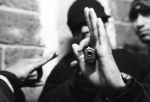In the past week I found media accounts of at least five cities which held community events to talk about gun violence. The events are usually sponsored by a coalition of community groups, religious congregations, law enforcement representatives and the requisite political leadership from City Hall. There will be some entertainment, probably a youth choir, a passionate, tug-at-your-heartstrings appeal from the mother or sibling of someone recently gunned down, and a “let’s get rid of the guns” rant from the head of the local Everytown group. Pardon me if I’m sounding a little cynical, but I don’t see any real connection between these admittedly honest endeavors and any change in the rates at which we keep killing or wounding ourselves or others with guns.
I know, I know, the problem isn’t guns. The problems are joblessness, hopelessness and all the other ness’s that pervade inner-city neighborhoods where the overwhelming amount of gun violence occurs. Want to get rid of gun violence? Get rid of the ghetto; it’s as simple as that. But I’m not so sure that lifting sixty million people above the poverty line is such an easy task. After all, we started trying to eradicate poverty after Michael Harrington published The Other America in 1962 and I think the only thing we’ve accomplished in that regard is to validate the old homily about how God loves the poor because He made so many of them.
 On the other hand, let’s not forget the fact that even if 11,000 people are killed with guns each year and another 50,000 are wounded, that gun violence is still a comparatively rare event. In 2012, according to the UCR, there were roughly 10 million serious crimes against people and property committed in the U.S., of which 1/10th of one percent were gun homicides and another 1.5% were armed assaults. So even though the chances of being the victim of a violent crime are about one person out of every thirty, the chances of being injured or killed with a gun are a lot less. Which means that even in “high-crime” neighborhoods, there are an awful lot of people walking around with criminal intent who don’t use a gun.
On the other hand, let’s not forget the fact that even if 11,000 people are killed with guns each year and another 50,000 are wounded, that gun violence is still a comparatively rare event. In 2012, according to the UCR, there were roughly 10 million serious crimes against people and property committed in the U.S., of which 1/10th of one percent were gun homicides and another 1.5% were armed assaults. So even though the chances of being the victim of a violent crime are about one person out of every thirty, the chances of being injured or killed with a gun are a lot less. Which means that even in “high-crime” neighborhoods, there are an awful lot of people walking around with criminal intent who don’t use a gun.
That being the case, and the numbers don’t lie, we have to assume that the guys (and it’s almost always males) who do use a gun to damage someone else have made a conscious choice. Because it’s not as if the shooters are the only people in the ghetto without a job; it’s not as if they are the only people in the neighborhood whose income doesn’t make it above the poverty line; it’s not as if they are the only ones without two parents in the home. If this were the case, all we would have to do to solve the gun problem would be to get our hands on the U.S. Census neighborhood report, identify the folks who fit this down-and-out profile, and follow them around until they pull out their gun.
The problem really lies in the fact that we can do all the sociological research we want, we can amass and correlate all the data, and we still come smack up against one, unassailable problem; namely, we can’t talk to the people who pulled the trigger of the gun. The victims are ready to talk from today to next year. They’ll talk while they’re waiting for the EMT, they’ll talk while they’re being stitched up in the emergency room, they’ll talk at a community anti-violence event. But the shooters won’t talk because: a) half of them aren’t found, and b) when they are apprehended the penal system and their lawyers won’t or can’t let them talk at all.
We need to figure out a way to get into the heads of the people whose behavior results in gun violence. Most people, even criminals, don’t walk around with guns and even fewer use them in violent ways. Until we understand what separates the shooters from everyone else by asking the shooters why they separated themselves from everyone else, we’ll have to hope that those anti-gun events make our streets and homes more safe.
Recent Comments